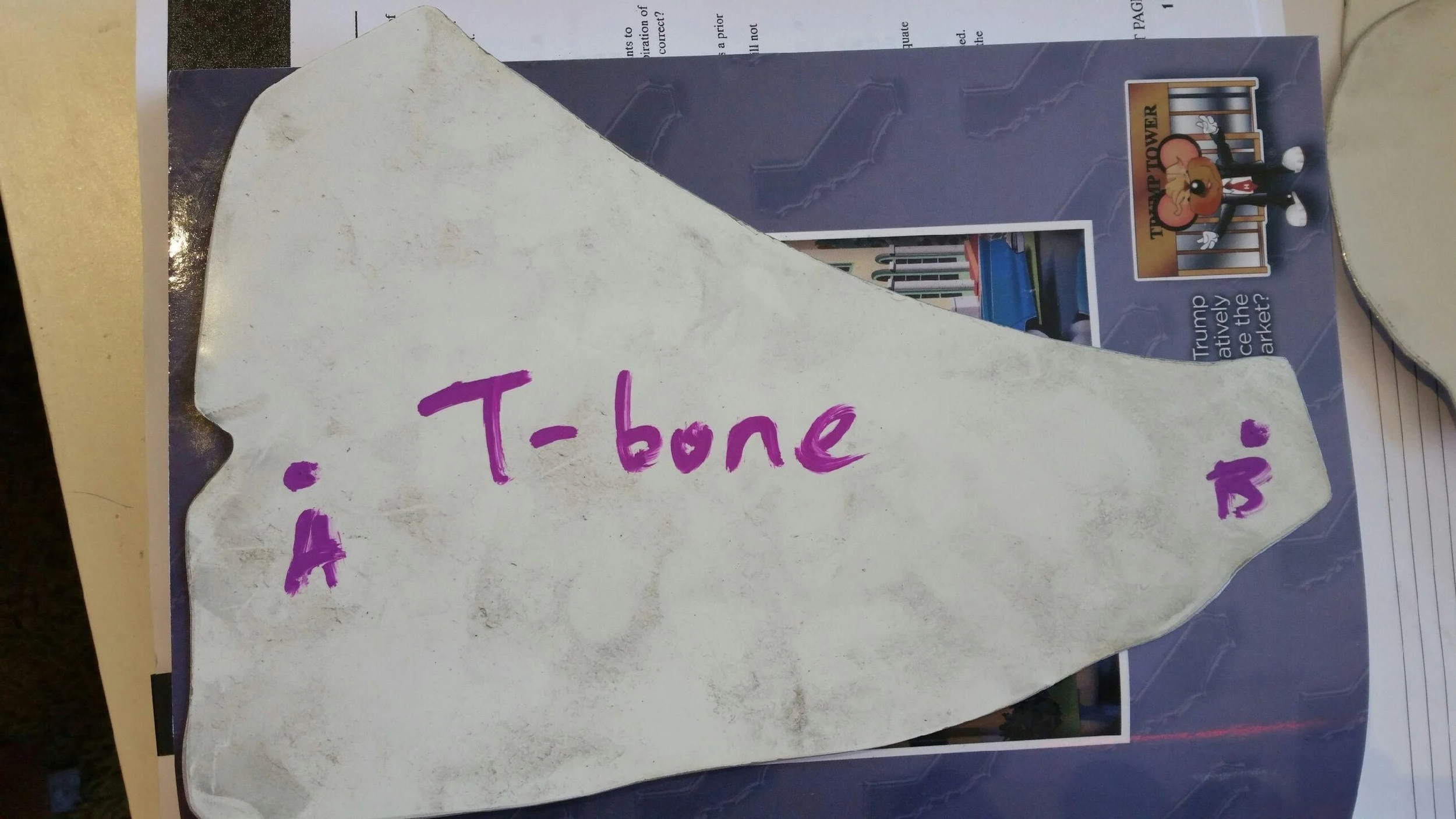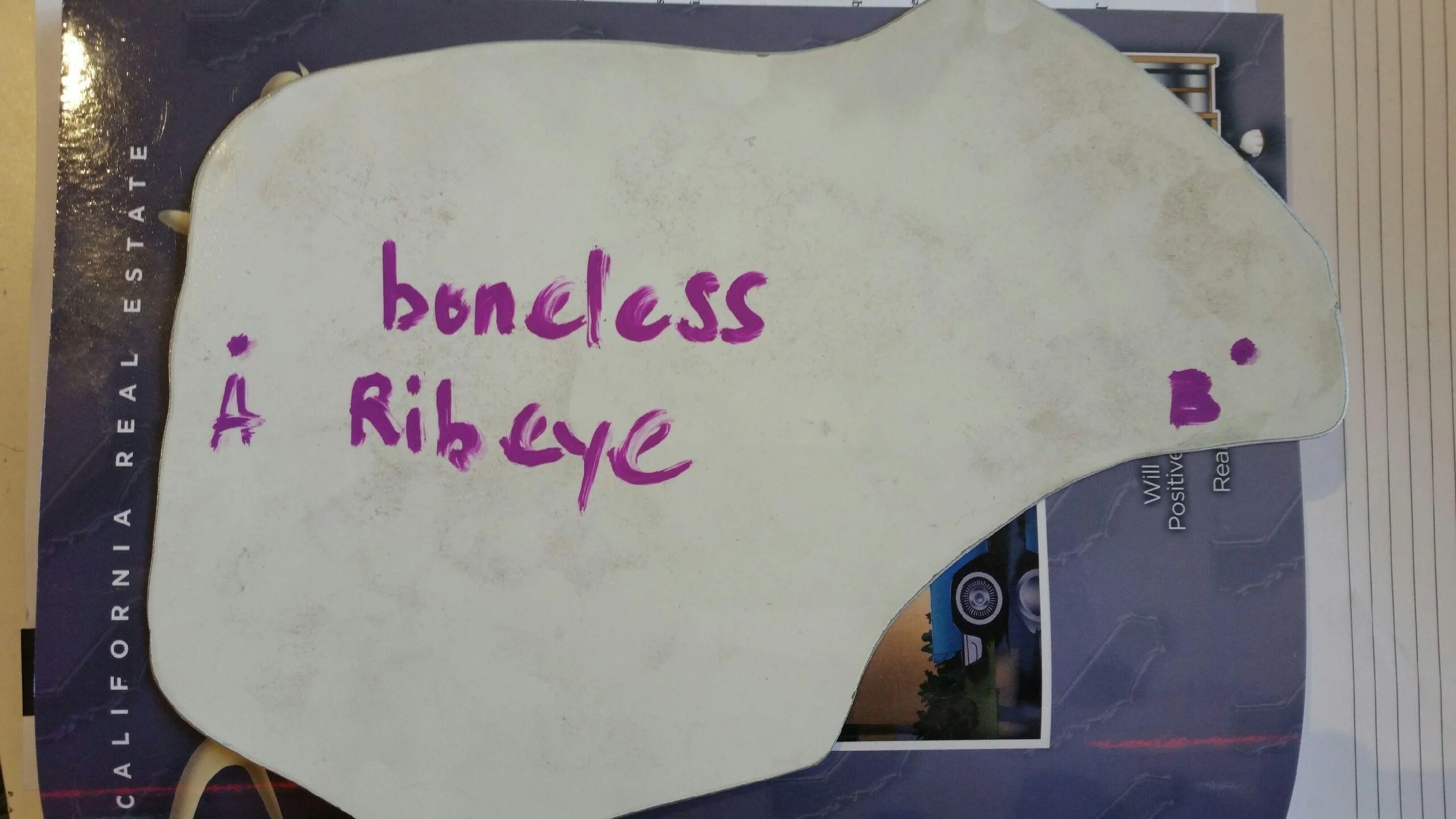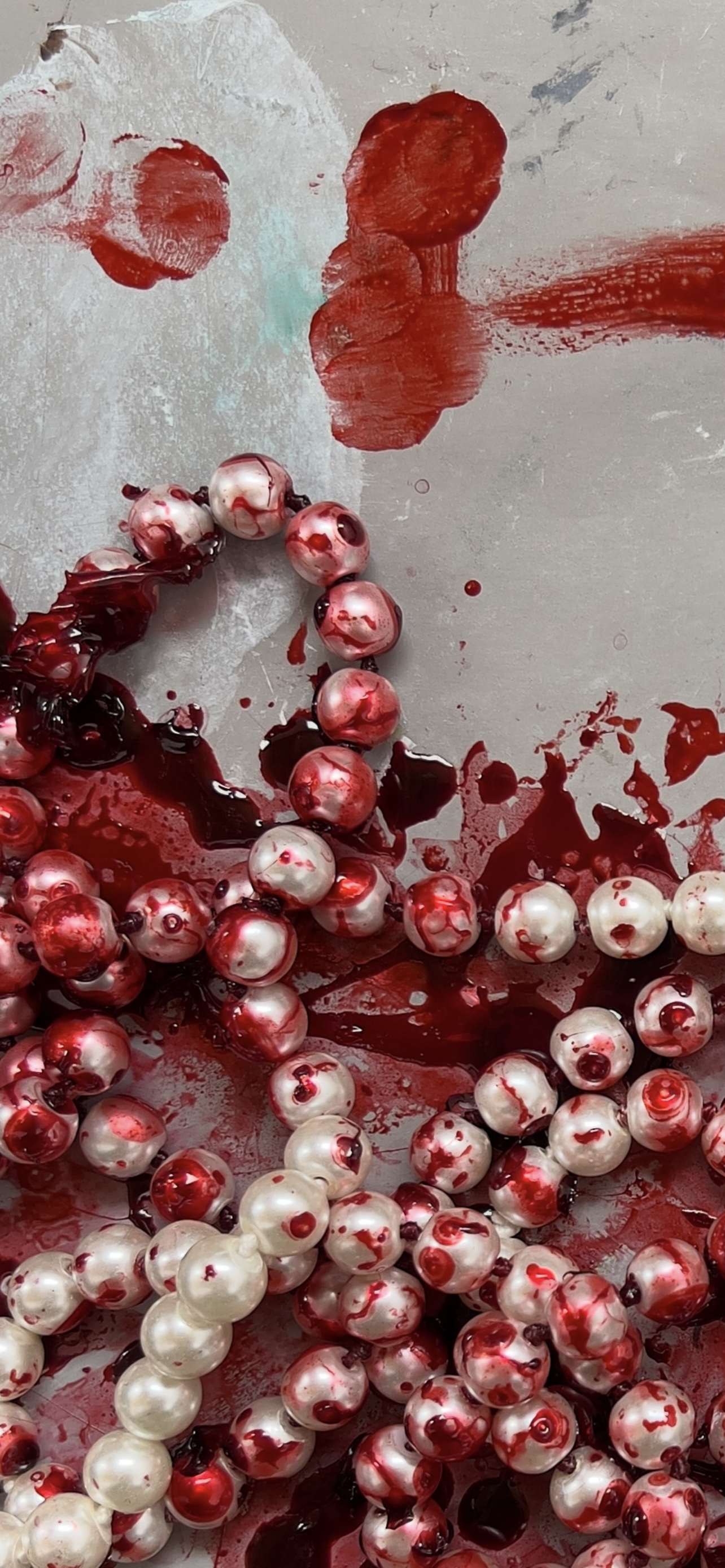Car Meat 2017-ongoing series
Contemplating the Minds of a Thousand Strangers
Car Meat Fawn Rogers, accident-impacted car hoods, casters, meat hooks, trolleys, automotive paint. Size 94 x 60 x 30 “
Here’s the Beef
Comprised of a metal hanging system (initialed and numbered in welding at its base), Car Meat is an installation of metal forms suspended from a trolley and large butcher hooks, similar to what one might find in an industrial abattoir. The artist has detached, steam-cleaned, sand-blasted, cut, primed, and painted slabs of automobile carhoods. Each element has been painstakingly formed through laborious effort, the irregular surfaces reflecting the physicality of the processes.
Their form intentionally resembles different cuts of steak, including ribeye, NY strip, and top sirloin. They also call to mind bodies dispersed violently from a car crash, flung like pieces of offal in a butcher’s shop. Or perhaps even other forms found in nature, flocks of birds or sexual organs, phalluses, and breasts. The color and treatment of the surface give the sculptures such a sensuous eminence that the desire for a haptic experience is tangible. One can easily imagine the impulse to touch or stroke the sculptures.
Car culture has long been a fascination of artists. British artist Richard Hamilton merged the curves of a 1950s car chassis with female forms in his early paintings, and artists as disparate as Richard Prince and Judy Chicago have used car hoods as sculptural forms and painting surfaces. Fawn Rogers’s processes compare best to two artists with quite contrasting aesthetics: John Chamberlain and Teresa Margolles. Rogers uses the industrial aesthetic akin to Chamberlain’s ambitious, heavy sculptures. In Car Meat, the forms could be detumescent Chamberlains or Calder elements. Ideologically, Rogers is aligned with Teresa Margolles, who has used the shattered windshields from fatal accidents and narco violence to transform the glass into small sculptures that mimic fine jewelry. Rogers prefers to find her “steaks” cut from cars that have been impacted by violent accidents.
Car Meat also references classical paintings spanning from Haim Soutine to England’s Kitchen Sink School painters and Francis Bacon. Many have considered these predecessors as depicting the existential crisis of the human condition and the man-made violence inflicted upon our world. As Darwin acknowledged, only the fittest survive. Rogers likewise acknowledges this brutality in Car Meat, in particular that of humanity’s destruction of our planet through our desire for luxuries and convenience. The automobile and the cattle industries are two large causes of environmental crises today. Indeed, we exist in the Anthropocene epoch, named as such due to the irreversible effects that humans have had on the planet.
Car Meat, however, is also a celebration of life. The fact that, as humans, we embody a consciousness that can ponder ethical and moral complexities is a wonder that transcends our mortality. How do we strike a balance between what we want, beautiful vehicles, red meat, bottled water, seafood shipped to Los Angeles from Chile, and the possibility of a simpler life that is more respectful of the longevity of our planet? This struggle between pleasure and the human machine is a classical theme. Rogers has said, “I want to set up a tent for a month at Pick Your Part and enjoy the conversation with all the personalities and the retired and damaged-beyond-repair cars, trucks, and vans." Rogers doesn’t preach or propose solutions. Rather, she opens a dialogue with which each of us has to engage. —Kathy Battista
























